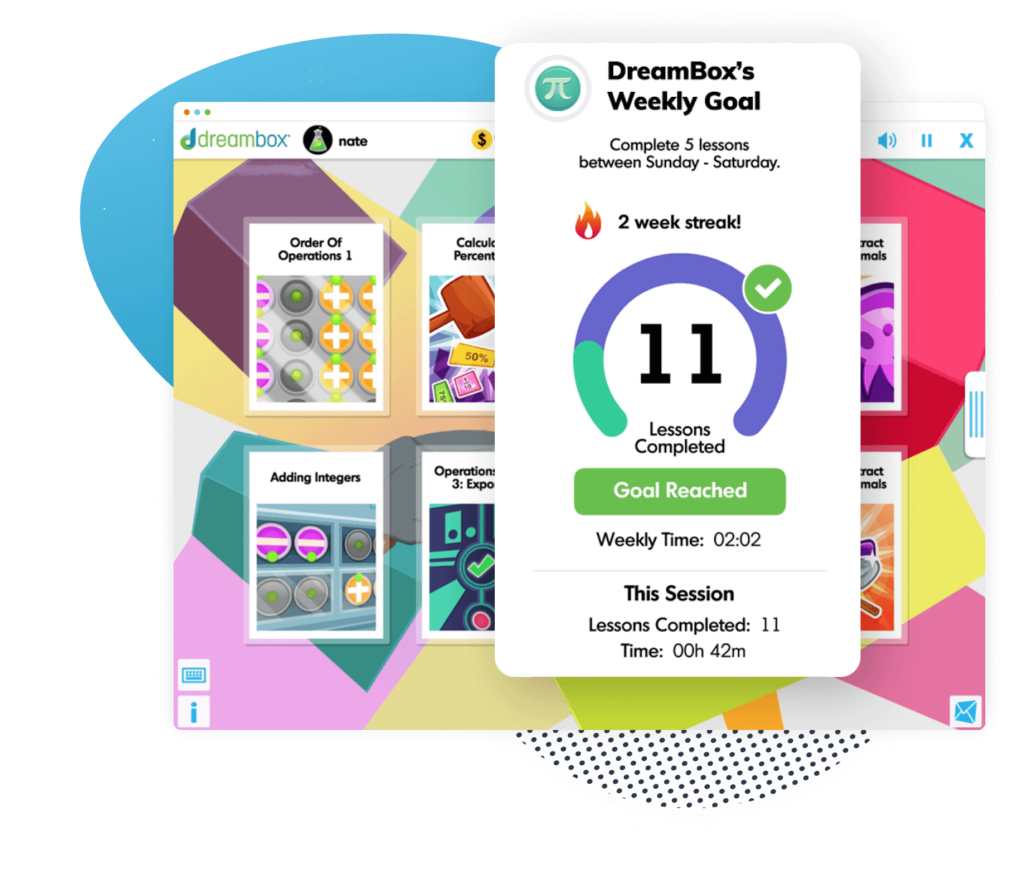3rd Grade Word Problems
Explore these 30 3rd grade word problems (with answers) designed to boost your child’s skills and confidence. Let’s get started!

Author
Katie Wickliff
Published:
Aug 2025
Key takeaways
- • Practicing word problems helps students connect math to the real world
- • By 3rd grade, students have developed the skills they’ll need to tackle word problems
- • Both word problems and traditional math drills have a place in the 3rd grade classroom
Many adults likely remember elementary math as a blur of timed tests, flashcards, and repetitive fact drills. So if you’re a parent or caregiver today, you’ve likely noticed that your 3rd grader’s math looks different than when you were their age. Instead of an emphasis on rote memorization, 3rd grade students learn why math works and how it connects to the real world. Mastering word problems is an excellent way for 3rd graders to develop these important skills, setting the stage for more complex math in later grades.
In this article, we explain what word problems are and why 3rd grade is an ideal time for introducing them. You’ll also find 30 sample problems (and an answer sheet!) perfect for 3rd grade students. The questions are organized by topic and progress from easy to more challenging. Each one is labeled as a one-, two-, or three-step problem. For even more practice, check out Dreambox Math, an interactive online program that uses fun games and activities to build math skills. If your student needs more support or wants an extra challenge, Dreambox is a fantastic learning tool.
What Are 3rd Grade Word Problems?
A word problem is a math question written like a short story or real-life scenario. Instead of simply giving students numbers to add, subtract, multiply, or divide, students must read the word problem, determine what it’s asking them to do, and choose the right math steps to find the answer.
By 3rd grade, most students have developed stronger reading skills, making it easier to understand what a word problem is asking. They’ve usually mastered basic addition and subtraction, giving them a solid foundation to build on. At this age, students are also able to think more critically, which allows them to handle more complex math with multiple steps. Together, these growing skills make 3rd grade a perfect time to introduce word problems.
Table of contents
Get more 3rd grade math practice with DreamBox
30 3rd Grade Word Problems
Here are 30 word problems that cover addition and subtraction, multiplication and division, fractions, time, and measurement.
Addition and Subtraction
1. Harper made 12 friendship bracelets on Monday and 18 friendship bracelets on Tuesday. How many bracelets did she make in all? (1-step addition)
2. There are 97 pairs of jeans available online. If 46 pairs of jeans are sold, how many are left? (1-step subtraction)
3. Lubia has 6 meatballs on her spaghetti. Her sister has 8 meatballs, but gives 4 to Lubia. How many meatballs does Lubia have now? (1-step addition, extra number)
4. Chase had 145 stickers. He gave 56 stickers to his classmates. How many stickers does Chase have left? (1-step subtraction, with borrowing)
5. Mrs. Lane’s class is running a canned food drive. They collected 116 cans on Thursday, and 77 cans on Friday. How many cans did they collect in all? (1-step addition)
6. The twins want to bake 40 cookies for their friends. Nicky bakes 12 cookies and Nathan bakes 24 cookies. Did they bake enough for their friends? (2-step addition and subtraction)
7. The Foster family collected 129 seashells. They gave 57 to their cousins and then found 34 more at the beach. How many seashells does the Foster family have now? (2-step addition and subtraction)
8. Oscar and his friend want to bounce a basketball 140 times. Oscar bounced the ball 82 times, and his friend bounced the ball 69 times. Did they reach their goal? (2-step addition and subtraction)
9. Kayden had 240 stickers. She gave 85 stickers to her friend and 47 marbles to her cousin. Later, she bought 50 more stickers at the store. How many stickers does Kayden have now? (Challenge: 3-step subtraction, subtraction, and addition)
10. A theater has 325 tickets available for the new movie. It sold 156 tickets in the morning and 89 tickets in the afternoon. That evening, the theater received 120 more tickets. How many tickets does the theater have now? (Challenge: 3-step subtraction, subtraction, addition)
Multiplication and Division
1. Each basket holds 3 apples. If there are 5 baskets, how many apples are there in all? (1-step multiplication)
2. Mrs. Paul has 9 tables in her classroom. She gives each table a pack with 6 pencils inside. How many pencils does she hand out altogether? (1-step multiplication)
3. There are 18 cookies to be shared equally among 3 friends. How many cookies does each friend get? (1-step division)
4. Clara made 40 cupcakes and packed them into boxes of 5 cupcakes each. How many boxes did she use? (1-step division)
5. There are 6 boxes of crayons. Each box has 5 crayons. If 15 crayons are broken and thrown away, how many crayons are left? (2-step multiplication and subtraction)
6. A wildlife park has 5 birdhouses. Each birdhouse is home to 4 birds. The birds are moved into 2 equal groups for a health check. How many birds are in each group? (2-step multiplication and division)
7. There are 8 picnic tables in the park. Each table seats 7 people. Later, 6 more people arrive and sit on benches. How many people are at the park now? (2-step multiplication and addition)
8. A gardener plants 8 rows of flowers. Each row has 10 flowers. After planting, the gardener removes 20 flowers because they were unhealthy. Then, the flowers are divided equally into 6 sections for watering. How many flowers are in each section? (3-step multiplication, subtraction, division)
9. A car factory has 3 machines. Each machine makes 5 cars every hour. The factory works for 4 hours a day. At the end of the day, the cars are parked equally into 2 garages. How many cars are in each garage? (3-step multiplication, multiplication, division)
10. A factory produces 9 boxes of toys. Each box contains 20 toys. After donating 45 toys, the remaining toys are packed equally into 5 crates. How many toys are in each crate? (Challenge: 3-step multiplication, subtraction, division)
Fractions, Time, and Measurement
Fractions Word Problems
Time Word Problems
Measurement Word Problems

The math program that drives results
Get started today!
DreamBox adapts to your child’s level and learning needs, ensuring they are appropriately challenged and get confidence-building wins.
Answers
Addition and Subtraction
- Harper made 30 bracelets
- 51 pairs of jeans left
- Lubia has 10 meatballs
- Chase has 89 stickers left
- Mrs. Lane’s class collected 193 cans
- No — they baked 36 cookies (not enough)
- The Foster family has 106 seashells
- Yes — they bounced the ball 151 times
- Kayden has 158 stickers
- The theater has 200 tickets
Multiplication and Division
- 15 apples
- 54 pencils
- 6 cookies
- 8 boxes
- 15 crayons
- 10 birds
- 62 people
- 10 flowers
- 30 cars
- 27 toys per crate
Fractions, Time, and Measurement
- ¾ of the pizza
- ⅖ yard of ribbon
- ⅚ of the juice box
- 3 slices
- 2:45 p.m.
- 3:45 p.m.
- 1 hour and 15 minutes
- 8 feet
- 13 feet
- 1 yard long
FAQs about 3rd grade Word Problems
A good 3rd grade word problem is written clearly and uses simple language that helps students focus on math without getting confused. The problem should connect to real-world situations that kids can relate to, such as sharing school supplies, baking treats, or telling time. Additionally, a good word problem is just difficult enough to pose a challenge without being so difficult that students are immediately frustrated. Teachers and parents should choose the difficulty level based on each student’s individual learning needs and be willing to adapt as those needs change.
While there’s no exact number that works for every child, a general guideline for 3rd graders is to practice 8-12 word problems per week, spread out over a few days. This fits with what many classrooms and math programs recommend, and research shows that regular, manageable practice helps build math skills without becoming too overwhelming. The Common Core standards for 3rd grade also emphasize how practicing a variety of word problems helps children develop strong reasoning and problem solving skills .
Both word problems and traditional math drills have their place in the 3rd grade classroom. Word problems help students understand how math connects to the real world. Since students need to read the problem and figure out what it’s asking them to do, word problems build important critical thinking and problem-solving skills. Meanwhile, traditional math drills give students repeated practice with basic facts, which supports their success with word problems and more complex math.
Take at home math practice to the next level
Empowering parents and educators to make math practice more impactful. Plus, your kids will love it.
